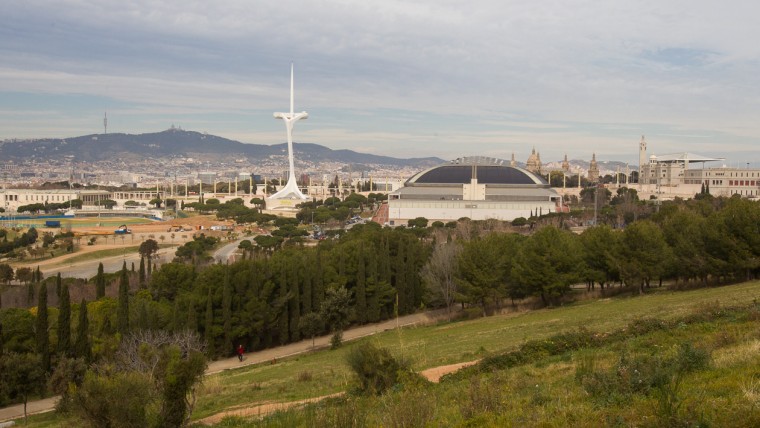
Montjuïc, where nature ranging from woodland to theme gardens sits cheek by jowl with leisure, sports, cultural and service areas, concentrates a wide variety of activities. Yet, despite the enormous pressure it bears, the mountain acts as a gigantic urban park which, viewed as a green space and as a whole, rather than its separate parts, can be described as a garden of gardens.
Together with Collserola it is one of the city’s great urban lungs, which is why it is in the middle of a process to regulate it and maintain the necessary balance between protecting its wealth and biodiversity and all these public uses.

History
Jean-Claude Nicolas Forestier was commissioned with designing the landscaping for the exposition venues and he worked under the guidance of Nicolau Maria Rubió i Tudurí. This team left the city with a number of exceptional green spaces that represent a particular concept and a model known as the “Jardí Meridional” (Southern Garden), which finds its highest expression in some of them. It is a type of landscaping that is derived from the Catalan tradition that blends with Arab landscaping, combined with notable influences from other types including French and Italian. Seen as a whole, the gardens closest to the urban area are the ones with a more complex layout, while the higher up you go, this complexity gives way to more naturalised spaces and woody areas.
-
- Phone number
- Tel.: 010
-
- Titularity
- Public center
- Address:
- Pg Migdia, 147
- Districte:
- Sants-Montjuïc
- Neighborhood:
- el Poble-sec
- City:
- Barcelona
- Sections of this equipment
- Àrea de pícnic can clos Open in a new window
- Aula ambiental de sants-montjuïc Open in a new window
- Àrea de pícnic camí del polvorí / segura / fortuna Open in a new window
- Àrea de pícnic mirador del migdia Open in a new window
- Àrea de pícnic al passeig olímpic - doctor font i quer Open in a new window
Esdeveniments
-
Fem l'hotel d'insectes de l'Aula Ambiental Open in a new window
26/04/2025
-
Aprofitament alimentari i cuina solar Open in a new window
31/05/2025
-
Fem sal d'herbes Open in a new window
12/04/2025
-
Fem envinagrats probiòtics amb verdures d'aprofitament Open in a new window
14/06/2025
-
Didaltruck: Arregla, transforma o personalitza la teva roba! Open in a new window
17/05/2025
-
Els Jardins de les Delicies: Visita als Jardins del Grec i Laribal Open in a new window
07/05/2025
-
Fem bosses amb samarretes recuperades Open in a new window
10/05/2025
-
Benvinguts a l'aula! Coneixem a l'aula ambiental de Sants - Montjuïc Open in a new window
05/06/2025
-
Visita als Horts de la Font Trobada Open in a new window
24/05/2025
-
Carrega't d'energia: Fem el mapa de recursos del nostre voltant Open in a new window
07/06/2025
-
Descobrim els tresors naturals de Montjuïc Open in a new window
29/03/2025
-
Neteja comunitària de Montjuïc Open in a new window
06/04/2025

